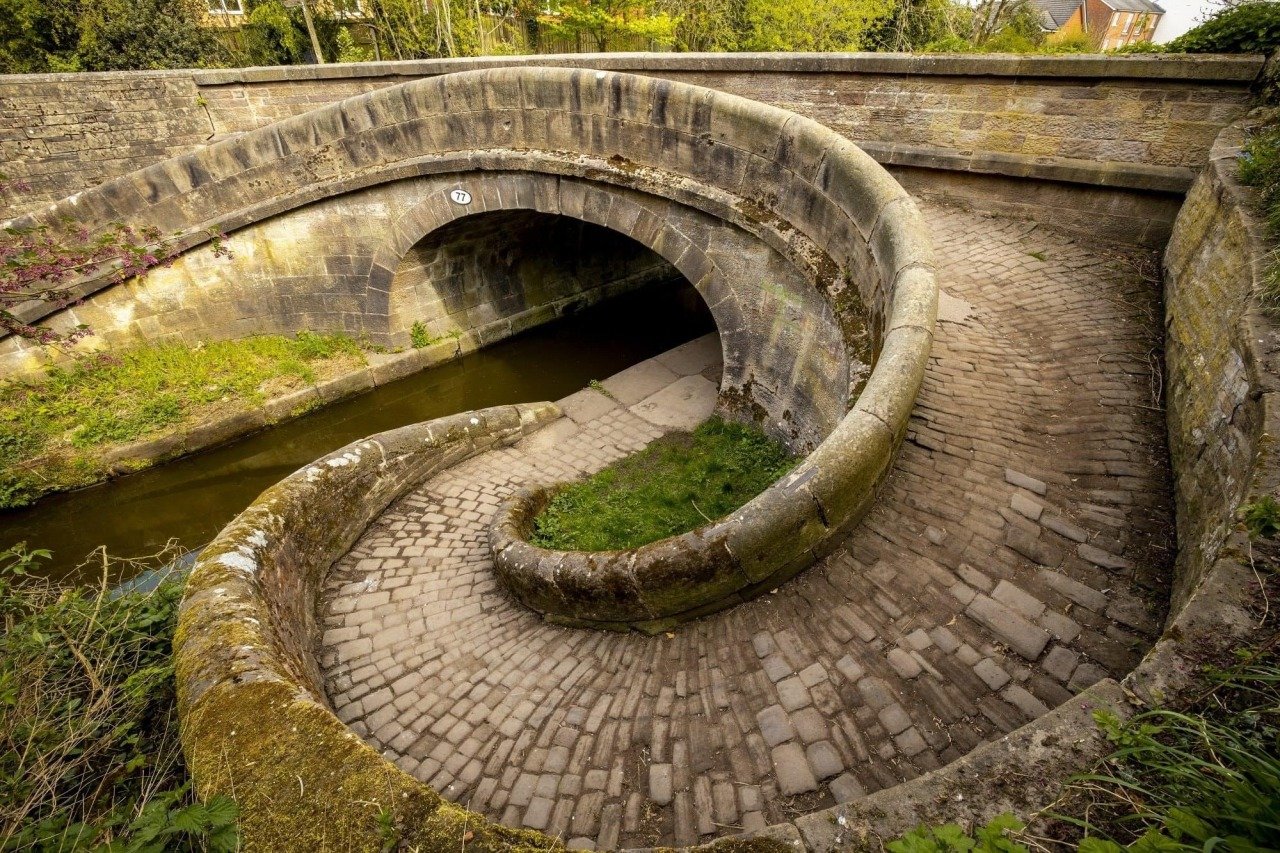Introduction
The Snake Bridge, located along the Macclesfield Canal in northern England, is a fascinating example of innovative engineering from the 19th century. Opened in 1831, the canal is lined with these uniquely designed bridges that played a crucial role in facilitating transportation during the industrial era. The Snake Bridge was specifically designed to allow horses to cross the canal without detaching the tow ropes from the boats they pulled, solving a key logistical problem of the time. Today, these bridges not only stand as symbols of industrial ingenuity but also serve as a popular tourist attraction.
Historical Context
The Macclesfield Canal: A Vital Transportation Route
Constructed during the Industrial Revolution, the Macclesfield Canal provided a critical link between the town of Macclesfield and the Trent and Mersey Canal, creating an essential trade route that facilitated the movement of goods across northern England. At the time, canal transport relied heavily on horses to pull boats and barges. This method of transportation was a key component of the British economy, as it allowed goods such as coal, textiles, and raw materials to be transported efficiently.

However, the necessity of switching horses from one side of the canal to the other presented a logistical challenge. Traditional bridges required boatmen to stop, unhitch the horse from its tow rope, and lead it across the bridge, causing significant delays. The Snake Bridge was designed to solve this issue and increase efficiency on the canal.
Ingenious Design of the Snake Bridge
Spiral Ramps: A Functional Innovation
The Snake Bridge is characterized by its spiral ramps, which enable the horse to cross the canal without having to detach from the boat. These ramps curve in a 360-degree loop, allowing the horse to continue pulling the boat without stopping. The bridge’s name comes from the way the horse’s path twists and turns like a snake as it crosses from one side of the canal to the other.

This clever design saved both time and effort, making transportation on the canal more efficient. By eliminating the need to stop and reattach the tow rope, boatmen could keep their journeys moving smoothly, a crucial factor in the competitive and time-sensitive world of industrial transportation.
Materials and Construction
Snake Bridges were typically constructed using cast iron, brick, or stone, depending on the availability of local materials. The ramps themselves were often lined with rows of raised bricks, designed to prevent horses from slipping as they climbed or descended the spirals. These durable materials ensured that the bridges could withstand the weight and wear caused by constant use, as well as the elements.
Cultural and Industrial Significance
A Solution to a Practical Problem
The Snake Bridge is a prime example of how engineering innovations can solve real-world problems. The bridge’s spiral design was not only functional but also represented the ingenuity of the Industrial Revolution—a time when new solutions were continuously being developed to optimize work and transportation. The design allowed for faster, more efficient transportation on the canals, helping the British economy thrive during a period of rapid industrial growth.

Legacy of the Snake Bridge
Although the use of horses to pull boats on canals has long since faded, the Snake Bridges remain as historical monuments to the industrial past. Today, the Macclesfield Canal and its bridges attract visitors interested in both the scenic beauty of the canal and its rich history. The Snake Bridges serve as a reminder of the importance of canal transport in shaping Britain’s economic and social landscape during the 19th century.
Conclusion
The Snake Bridge on the Macclesfield Canal stands as an enduring testament to the brilliance of 19th-century engineering. By providing a practical solution to the problem of horse-drawn canal transport, the Snake Bridge significantly improved the efficiency of transportation during the Industrial Revolution. Its spiral design is not only functional but also symbolic of the creative and innovative spirit of the time. Today, these bridges remain an important part of Britain’s industrial heritage, offering visitors a glimpse into the past while continuing to inspire admiration for their innovative design.

